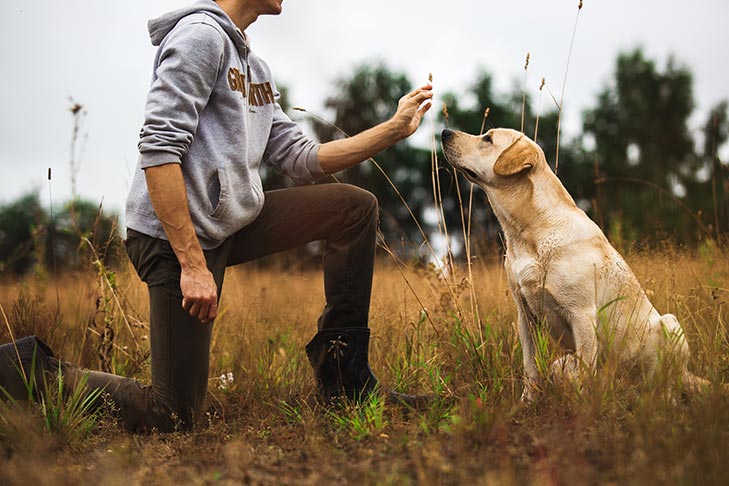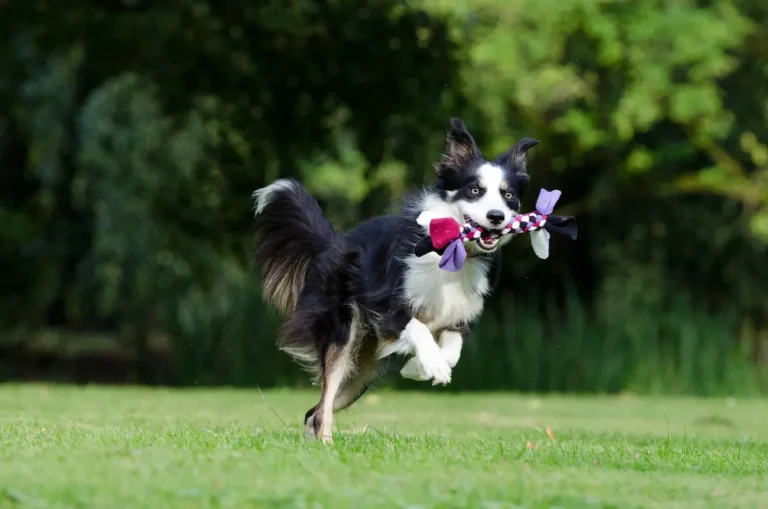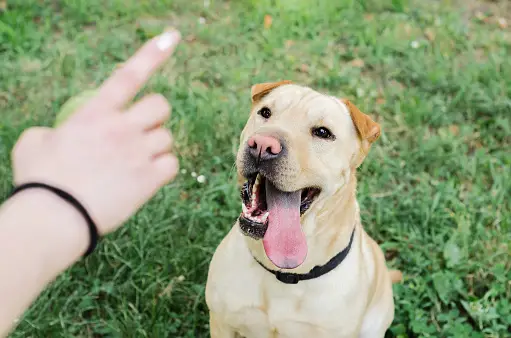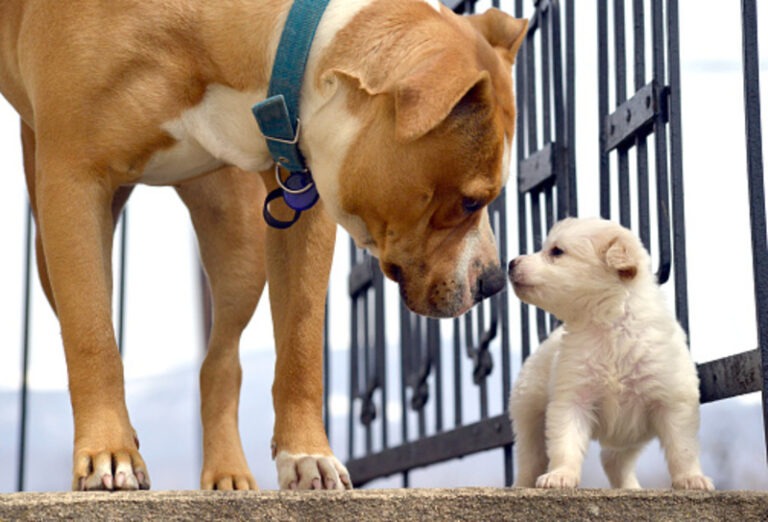Are you struggling to set clear boundaries for your dog during training? Setting rules is an important aspect of training your furry friend, as it helps establish a structure and ensures they understand what behavior is expected of them. In this article, we will discuss the significance of establishing boundaries in training and provide practical tips on how to set rules for your dog effectively. Whether you are a new dog owner or looking to improve your training techniques, this guide will help you create a harmonious environment for you and your canine companion.
Why is it important to establish boundaries in dog training?
Setting rules and boundaries is an essential aspect of dog training. By establishing clear guidelines for your furry friend, you not only promote discipline and obedience but also prevent potential behavioral issues and ensure their safety.
Promotes discipline and obedience
Establishing boundaries in dog training helps promote discipline and obedience in your canine companion. Dogs thrive on structure and routine, and by setting rules, you provide them with a framework to follow. When your dog understands what is expected of them, they are more likely to behave appropriately and respond to your commands. Consistency in enforcing boundaries helps your dog learn what is acceptable behavior, leading to a well-behaved and disciplined pet.
Prevents behavioral issues
Another crucial reason to establish boundaries in dog training is to prevent behavioral issues from arising. Without clear rules, dogs may become confused about their role and may display unwanted behaviors such as excessive barking, aggression, or destructive chewing. By setting boundaries, you are effectively communicating to your dog what behaviors are acceptable and what are not. This clarity helps prevent the development of behavioral problems and ensures a harmonious relationship between you and your furry friend.
Ensures safety
Establishing boundaries in dog training is essential to ensure the safety of your pet, as well as others around them. By teaching your dog to respect boundaries, you can prevent them from engaging in dangerous or potentially harmful behaviors. For example, setting boundaries regarding approaching strangers or staying within designated areas can help protect your dog from getting into accidents or confrontations. Additionally, establishing boundaries when it comes to interactions with other animals or respecting personal space can prevent conflicts and potential injuries.
In conclusion, establishing boundaries in dog training is of utmost importance. It promotes discipline and obedience, prevents behavioral issues, and ensures the safety of your furry companion. By setting clear rules, you create an environment that is conducive to a well-behaved and happy dog, enhancing the bond between you and your pet.
Understanding the key rules for setting boundaries
Setting rules and boundaries is essential when it comes to training your dog. It helps establish a clear understanding between you and your furry friend, ensuring a harmonious and well-behaved pet. By following a few key principles, you can effectively communicate the boundaries to your dog and create a positive learning environment.
Consistency
Consistency is crucial when setting boundaries for your dog. Dogs thrive on routine and predictability, so it’s important to establish consistent rules and expectations. If you allow your dog to jump on the couch one day and then scold them for it the next, they will become confused and may develop unwanted behaviors.
To maintain consistency, make sure all family members are on the same page and enforce the rules consistently. Use the same commands and gestures each time to ensure your dog understands what is expected of them. By being consistent, you provide your dog with a clear understanding of their boundaries, making the training process much more effective.
Clarity
Clarity is another essential factor in setting boundaries for your dog. Dogs are not mind readers, so it’s important to be clear and specific in your expectations. Clearly define what behaviors are acceptable and what are not. When your dog understands the boundaries, they are more likely to comply.
One way to provide clarity is by using concise commands. For example, instead of saying “Please don’t jump on the guests,” a more effective command would be “Off.” Remember to also use consistent body language and tone of voice to reinforce your message.
Additionally, it’s important to set realistic boundaries that align with your dog’s abilities and instincts. For example, if you have a high-energy breed, it may be unrealistic to expect them to be calm and relaxed at all times. Understanding your dog’s natural tendencies and setting boundaries accordingly will lead to better training outcomes.
Positive reinforcement
Positive reinforcement is a powerful tool when it comes to setting boundaries for your dog. Instead of focusing on punishing unwanted behaviors, it’s more effective to reward and reinforce the desired behaviors. By using positive reinforcement, you can create a positive association with the boundaries you set, making your dog more eager to comply.
When your dog follows the rules or displays a desired behavior, reward them with praise, treats, or playtime. This positive reinforcement helps your dog understand that good behavior leads to positive outcomes, encouraging them to continue following the boundaries you’ve established.
It’s important to note that positive reinforcement should be immediate and consistent. The timing of the reward is crucial for your dog to associate it with the desired behavior. Be patient and consistent in rewarding your dog, and they will quickly learn and adapt to the boundaries you’ve set.
In conclusion, understanding the key rules for setting boundaries is vital in training your dog. Consistency, clarity, and positive reinforcement are essential components of effective boundary setting. By following these principles, you can establish a clear understanding between you and your dog, ensuring a well-behaved and happy companion.
Implementing rules for your dog’s training
When it comes to training your dog, implementing rules is essential for a successful and well-behaved furry companion. Rules provide structure and guidance, helping your dog understand what is expected of them and what behaviors are acceptable. By setting clear boundaries, you can establish a strong foundation for your dog’s training journey.
Setting physical boundaries
One way to implement rules in your dog’s training is by setting physical boundaries. These boundaries can help create a safe and controlled environment for both you and your pet. Consider using pet gates or baby gates to restrict access to certain areas of your home, such as the kitchen or bedrooms. This will help prevent your dog from getting into mischief or potentially dangerous situations.
Additionally, crate training can be an effective method for establishing physical boundaries. A crate can serve as a safe and comfortable space for your dog, providing them with a designated area where they can relax and feel secure. By using a crate, you can limit your dog’s access to the rest of the house when necessary, such as during mealtime or when you’re away.
Establishing routine and structure
Another important aspect of implementing rules in your dog’s training is establishing a consistent routine and structure. Dogs thrive on predictability, so having a set schedule can help them understand what is expected of them and reduce anxiety or confusion.
Create a daily routine that includes regular feeding times, exercise sessions, and designated potty breaks. Dogs are creatures of habit, and by sticking to a routine, you can reinforce positive behaviors and discourage unwanted ones. Consistency is key when it comes to training, so make sure to follow the routine as closely as possible.
In addition to a routine, providing structure in your dog’s training is crucial. Teach them where and when they should eat, sleep, and play. Use clear cues and signals to indicate when it’s time for training sessions or when they need to settle down. By providing structure, you can help your dog understand their role in the household and what behaviors are expected of them.
Teaching basic commands
Teaching your dog basic commands is an essential part of setting rules in their training. Commands like “sit,” “stay,” “come,” and “leave it” are not only useful for controlling your dog’s behavior but also for ensuring their safety in various situations.
Start with one command at a time and use positive reinforcement techniques, such as treats or praise, to reward your dog for obeying the command. Consistency and repetition are key when teaching commands, so practice regularly in different environments and gradually increase distractions as your dog becomes more proficient.
By teaching your dog these basic commands, you establish a clear line of communication, making it easier to enforce rules and prevent unwanted behaviors. Remember to be patient and consistent throughout the training process, as every dog learns at their own pace.
Implementing rules for your dog’s training is essential for their overall well-being and your peace of mind. By setting physical boundaries, establishing routine and structure, and teaching basic commands, you can create a harmonious and well-behaved canine companion. So start implementing these rules today and watch as your dog becomes a model of good behavior.
In conclusion, establishing boundaries in training is essential for creating a well-behaved and obedient dog. By setting clear rules and consistently enforcing them, you can effectively communicate your expectations to your furry friend. This not only helps in preventing behavioral problems but also strengthens the bond between you and your dog. Remember, patience and consistency are key when it comes to training, so be sure to reward positive behavior and correct any mistakes gently. With time and effort, you can establish a harmonious and respectful relationship with your dog based on trust and understanding.







